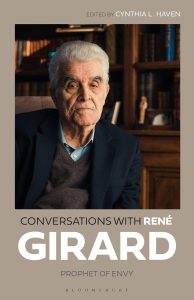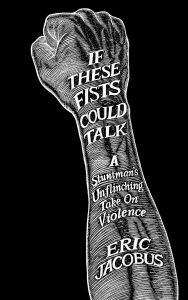In this issue: Updates on book discounts and forthcoming events, plus three book reviews. Looking forward to seeing many of you in Rome!

Contents
Letter from the President: Nikolaus Wandinger, This Year in Rome
Editor’s Column: Curtis Gruenler, Always in Peace
COV&R Annual Meeting, Rome, June 4-7, 2025
Theology & Peace Quarterly Speaker Series, online, June 5, 2025
Generative Anthropology Summer Conference, Warsaw, June 25-27, 2025
Theology & Peace Online Mini-Conference, September 13, 2025
COV&R at the American Academy of Religion, Boston, November 22-25, 2025
Letter from the President
This Year in Rome
Nikolaus Wandinger

Dear COV&R members and friends,
This time, I only want to add a brief addition to our editor’s column, as he has already formulated so well how our conference site, our Colloquium’s purpose, and the message of the new Pope fall into place with each other so well.
While it is a fact that Pope Leo XIV is the first US-born pope, I don’t think his American birth and citizenship were the main focus of his electors. But he is obviously a person who can easily move from one setting to another: from the U.S. to Peru, from his Augustinian order to being diocesan bishop, from his diocese of Chiclayo in Peru to the Roman Curia. He has proven that he can walk bridges and thus he will also be able to build bridges. It will be interesting to see how he interacts with the powerful of the world and how he builds bridges for the marginalized with them.
But, let me return to us, the Colloquium on Violence and Religion. As Curtis mentions, in addition to our yearly conference in on Spirituality, Religion, and the Sacred, the Advisory Board of COV&R will meet to discuss our future: where our subsequent conferences will take place (2026 is already scheduled for Chicago, the home town of Pope Leo), possible ways to reshape our online presence, and how we can position ourselves in these trying times in which the freedom of research is in danger. I am looking forward to deliberating these things with the board and then with those members of COV&R who will be present at our business meeting on Saturday. I hope for a large attendance.
Editor’s Column
Always in Peace
Curtis Gruenler

As I write, Pope Leo XIV has just greeted the world with a blessing and a summons that included a line seemingly addressed at once to Christ, Pope Francis, and the audience: “You help us to build bridges with dialogue and encounter so we can all be one people always in peace.” COV&R is a colloquium dedicated to such dialogue and encounter, focused on violence and religion for the sake, implicitly, of peace. What a blessing it will be to meet in Rome at this time, with a world in crisis and a fresh reminder of the opportunity for peace. See “Forthcoming Events” below for more on our annual meeting. Please register by Friday, May 16, if you have not already.
COV&R’s board will meet immediately before the conference, which will conclude as usual with a business meeting for the whole membership. We always welcome concerns and ideas from COV&R members for discussion at the annual meeting. You may direct them to me so that I can refer them to the president and executive secretary.
News
A 20% discount is available to COV&R members on recent books in two series published by Michigan State University Press: Studies in Violence, Mimesis & Culture and Breakthroughs in Mimetic Theory. This includes pre-orders of a new title due out in September, Così fan tutte, An Opera of Mimetic Revelation by Isabel Díaz-Morlán, and last year’s The World of René Girard: Interviews by Nadine Dormoy, reviewed below. In addition, a 30% discount is available on selected titles from the backlist with a purchase of three or more. For more information, please see this page in the members section of the COV&R website. The same page includes a discount code for ordering through Eurospan, which has better shipping rates when ordering from Europe than ordering directly through MSUP.
Congratulations to COV&R member Paul Lynch, whose book, Persuasions of God: Inventing the Rhetoric of René Girard, was chosen as the 2024 Book of the Year by the Religious Communication Association.
Julie and Tom Shinnick’s read-aloud-and-discuss Zoom group is reading James Alison’s The Joy of Being Wrong: Original Sin through Easter Eyes. It meets weekly on Monday nights at 6:30-8:00 Central Time with pre-reading chat from 6:00. New participants are welcome. Julie says, “Previous participants have enjoyed the uniquely engaging experience of the read-aloud-and discuss format.” If you are interested, please email Julie.
Forthcoming Events
Spirituality, Religion, and the Sacred
COV&R Annual Meeting
Rome
June 4-7, 2025
The conference in Rome is shaping up to be a significant event for re-evaluating the place of religion and spirituality in modernity, from the perspective of mimetic theory. With increasing polarization and new forms of sacred violence emerging, the role of religion and spirituality for cultural and personal renewal is critical to explore. COV&R will host a range of significant speakers to break open this vital theme for our time.
Please register by Friday, May 16. Here is the link to register. Up-to-date information about registration, speakers, and accommodations is available on the conference website. For more information about the conference, please email the conference organizers or Joel Hodge.
Plenary speakers will include:
- Prof. Ann Astell (University of Notre Dame, USA)
- Prof. William T. Cavanaugh (DePaul University, USA)
- Rt Revd Dr Rowan Williams PC, FBA, FRSL, FLSW – Honorary Professor of Contemporary Christian Thought, University of Cambridge, and former Archbishop of Canterbury
- Assoc. Prof. Brian Robinette (Boston College, USA)
- Assoc. Prof. Diego Bubbio (University of Turin, Italy)
- Prof. Maria Stella Barberi (University of Messina, Italy)
- Prof. Giuseppe Fornari (University of Verona, Italy)
- Assoc. Prof. Jeffrey Hanson – Associate Professor of Philosophy, New College of Florida, USA, and Senior Philosopher, Human Flourishing Program, Harvard University
- The final day will include a participant discussion forum on the conference theme, beginning with reflections from: Prof. Scott Cowdell (Charles Sturt University), Prof. Petra Steinmair-Pösel (Head of Institute, KPH Edith Stein, Feldkirch, Austria), Assoc. Prof. Chris Fleming (Western Sydney University) and Assoc. Prof. Joel Hodge (Australian Catholic University).
The final day will also include a tour to the Papal Museum and grounds at Castel Gandolfo, followed by the conference dinner, which will have a special focus on the 10th anniversary of René Girard’s death. It will feature tributes by Assoc. Prof. Nikolaus Wandinger (COV&R president) and Mr. Martin Girard (COV&R board member and René Girard’s son). They will reflect on René Girard’s legacy and on his importance to COV&R as an association.
Theology & Peace Quarterly Speaker Series
The Power of Faith and Trauma-Informed Care to Move Rivalry to Relationship
Rev. Ellen Corcella
Thursday, June 5, 2024, 7:30-9pm EDT

….or, how a former prosecutor turned minister and hospital chaplain learned to help herself and others embody love, mercy, and courage in response to trauma.
Rev. Ellen Corcella, J.D., M.T.S., M.Div., has faced trauma personally and encountered traumatized individuals throughout her careers as a New York City prosecutor, ordained minister, and hospital chaplain. As a chaplain resident, embedded with a trauma surgical team in a level one urban trauma hospital, she struggled to find a path toward hope for her patients and their families. Corcella determined to mine her life and spirit for the faith and fortitude needed to look trauma in the eye and accept its presence in her body. Corcella encourages us to embrace our own woundedness so that we can become sources of healing and hope for ourselves and others.
She is the author of Walk with Me: A Journey through the Landscape of Trauma. A graduate of Christian Theological Seminary, her master’s thesis Mimetic Rivalry or Caring Relationship: The Counter-Narratives of Ruth and Mary Magdalene, argued that Rene’ Girard’s mimetic theory does not inevitably lead to rivalry and violence. She earned her Juris Doctorate from Georgetown University Law Center and a B.A. in political science from George Washington University.
The event is free, but registration is required. Here is the link for further information and registration.
Eighteenth Annual Generative Anthropology Summer Conference
“Generative Anthropology, the Originary Scene, and the Wellspring of Human Science”
Warsaw, Poland
June 25-27, 2025

Further information, including a call for papers, is available here. Proposals are due April 30.
Theology and Peace Online Mini-Conference
Creative Mimesis and the Practice of “Gentle Action”
Saturday, September 13, 2025, 2-6pm EDT
(Check in on Zoom 1:30 PM)

Join us for a special half-day, online event bringing together expert speakers on the topic of Creative Mimesis and the practice of “Gentle Action” in relation to René Girard’s mimetic theory, including within a global and historical context. Gentle Action refers to decision-making and action that relies not on externally manipulating events or imposing structure on organizations, but instead allowing authentic and effective solutions to arise from a grasp of the situation as a whole. The concept of Gentle Action emerged from insights scientists have made about the characteristics of self-organizing systems. (Click here for more information about Gentle Action, to see bios of the speakers, or to register.)
In keeping with Theology and Peace’s emphasis on both theory and practice,
- We will begin with two expert speakers, Girardian Vern Neufeld Redekop and philosopher Robin A. Collins, on the philosophy and theology of creative mimesis and Gentle Action, with time for moderated Q&A in the Chat function.
- We will then move to a synthetic roundtable panel discussion with our speakers, facilitated by Rebecca Adams, with some additional participant Q&A.
- We will conclude with an experiential discussion hour in small breakout groups, so participants can share in developing their own stories and responses.
- An optional Theology and Peace evening session in October will allow participants to continue the conversation and ask more questions of the speakers.
Felicity McCallum, an Indigenous Australian Girardian theologian and activist, will join us at the roundtable discussion and continue our conference theme at the November Theology and Peace Quarterly Speaker’s Series with stories of Creative Mimesis and Gentle Action.
CE credit available upon request. (Contact Karen Kepner.) A more detailed schedule with descriptions of each talk will be forthcoming.
How to sign up: Registration for the Mini-Conference is $25. However, cost should not be a barrier to anyone. If you need a scholarship, please contact Andrew McRae. Registration will be required in advance for everyone through Humanitix to receive the Zoom link for the event. Register here.
You can also click on the link above to see more information about Gentle Action in the additional links provided. Each of these links offers a helpful take on this emergent approach to problem solving. Speaker bios are also available.
COV&R at the American Academy of Religion
Boston, Massachusetts
November 22-25, 2025

Details to come, but here is the general website: https://aarweb.org/event/november-annual-meeting/. If you have any questions, please contact COV&R’s AAR coordinator, Chelsea Jordan King.
Book Reviews
For inquiries about writing a book review or submitting a book for review,
contact the Bulletin editor, Curtis Gruenler.
Reclaiming Sacrifice: Integrating Girardian and Feminist Insights on the Cross
Reviewed by Grant Kaplan

Chelsea Jordan King
Palgrave Macmillan, 2024
161 pages
With Reclaiming Sacrifice, Chelsea Jordan King opens a new conversation between feminist theology and mimetic theory regarding the theology of atonement, a longstanding stumbling block in Christian theology. King offers a grammar of sacrifice that explains how the Cross functions as an atoning instrument while addressing persistent feminist concerns with the image of “taking up one’s cross” and with theories whose practical application prevents the flourishing of the many victims for the sake of a forced and false reconciliation.
After a well-crafted opening chapter that lays out some of the most salient issues with atonement theory, King adds four additional chapters—two laying out the basic contours of feminist and Girardian critiques of sacrifice, one chronicling René Girard’s own evolution on the matter, and a final chapter offering a constructive theology of sacrifice that meets both Girardian and feminist concerns. Throughout, King evinces a steady hand, never rushing the reader, always methodical and deliberate. Her summaries of key exponents of feminist and womanist thought, as well as her treatment of Girard and, later, Schwager, dependably and accurately relate the given author’s insights.
It would be a mistake to undersell King’s effort as merely summative, even if she does a fair amount of brush clearing in the second and third chapters. She aims to reclaim sacrifice from a mistaken understanding: “Despite the inherent ambiguities surrounding the concept of sacrifice, this book endeavors to elucidate and reclaim a more positive interpretation, arguing that a true understanding of sacrifice necessitates recognizing the interplay between autonomy and agency” (26). Sacrifice lends itself to polysemous interpretation, and the misapplication of sacrifice does require precluding a better application.
Although King professes only to treat a limited number of feminist and womanist theologians, she nonetheless explores a variety of theological opinions about when and how atonement theories and sacrificial language can be applied. Of particular note are those who highlight how sin can be recast from a specific act to a passive response, in some cases a passive response to injustice. For someone caught in an abusive domestic relationship, a theology that demands sacrifice—understood in such a manner as to require acceptance and continued abuse as a form of “taking up the cross”—is, in no uncertain terms, death-dealing. One does not need to be a feminist theologian to recognize how non-redemptive such an interpretation would be, but it is theologians like Delores Williams who have highlighted the problems of this interpretation for those closest to the margins. After treating these positions, King affirms them in the broad sense while pointing toward the need to account for how “forgiveness, healing, and transformation can occur” (67). For King, the Cross, understood correctly, functions as an agent for such redemptive action in the here and now.
Chapters 3 and 4 take up Girard most directly, as King judiciously summarizes the logic of Girard’s non-sacrificial reading of the Gospels expounded in Things Hidden (see Book II, ch. 2, “A Non-Sacrificial Reading of the Gospel Text”). She then lays out, through the now-published epistolary exchange between Girard and Raymund Schwager, how Schwager pushed Girard to reconsider his non-sacrificial reading and replace it with a self-sacrificial reading. Through a consideration of Solomon’s judgment regarding rival claims of motherhood, Girard comes to see the true mother’s renunciation of her rights to the child under contestation as sacrificial, in the sense of being self-sacrificial—it “represents a form of sacrifice characterized by selflessness and love” (100). King summarizes the apex of the exchange on sacrifice as follows: “The death of Christ could be understood as salvific because it transformed and reversed the scapegoating mechanism from within. This reversal set free those who had been innocently scapegoated throughout history” (104). This interpretation of the Cross forecloses the bad understanding of sacrifice brought to the surface by the feminist theologians surveyed earlier in the book.
In the final chapter, King advances a theology of atonement by asking, among other pertinent questions, what is the purpose behind God willing Christ’s death (126)? Doing so enables King to show how Girard, along with certain feminists, “encourages a theological exploration that distinguishes between the sacrificial acts that genuinely reflect God’s redemptive love and those that perpetuate violence and exclusion” (127). King recovers the Augustinian gratia sanans, “healing grace,” as a type of grace that captures the healing vector of redemption. She concludes by citing an essay by the great German Jesuit, Karl Rahner, which distinguishes between following and imitating Christ. Here King teases out how, for Rahner, Jesus’ taking up the cross is part of the divine victory over sin and death (144). One could add Bernard Lonergan’s account of the cross transforming evil through love, and, I suspect, deepen King’s point.
This reviewer had very few quibbles. One might have hoped for more examples, perhaps from literature or film, to demonstrate more concretely just what is at stake in questions of redemption. King references previous conversations but does not really treat previous mimetic attempts to deal with this problem. Here one recalls the strong work by Mark Heim (Saved from Sacrifice) and Mathias Moosbrugger (Die Rehabilitierung des Opfers) as well as the volume edited by Michael Kirwan and Sheelah Treflé Hidden, Mimesis and Atonement, which includes Duncan Morrow’s gripping chapter about atonement theory and the cycle of violence in Northern Ireland. Schwager himself benefitted from the work of Michel Corbin, a French medievalist and scholar of Anselm, and reviewed Corbin’s edition of Anselm’s work. King takes up James Alison’s early work but does not engage his “An Atonement Update” in the 2007 Undergoing God or his fine essay, “Traversing Hostility” in Mimesis and Atonement. It is not clear how much any of these works would have advanced King’s particular argument, but at this point an assessment of the landscape regarding mimetic theory and atonement theology would be helpful. While we await such a work, one can hope that King’s Reclaiming Sacrifice generates the rich conversation that it initiates and that it surely deserves.
Conversations with René Girard: Prophet of Envy
and
The World of René Girard: Interviews
Reviewed by Curtis Gruenler

edited by Cynthia L. Haven
Bloomsbury Academic, 2020
219 pages
Nadine Dormoy
Translated by William A. Johnsen
Michigan State University Press, 2024
176 pages
Interviews suited René Girard well. In his writing, he often seems to be engaging with multiple, usually unnamed interlocutors all at once, often to dizzying effect. Interviews, on the other hand, show him focusing on an audience of just one or two while continuing his quest to state his ideas more effectively, and we get to follow along.
Girard was “doggedly dialogic,” as Cynthia L. Haven quotes Sandor Goodhart saying in her introduction to Conversations. Goodhart continues: “He likes working with people on things. He always spoke in terms of ‘us,’ ‘our’ project. What ‘we’re’ doing. He had a sense of discovery.” Mikhail Bakhtin’s dialogic sense that truth “is born between people collectively searching for truth” (3, italics original) fits well with Girard’s mimetic theory. His interviews have some of the usual performative aspect, but also show him in the process of discovery, inviting others to share his way of thinking.
Conversations includes interviews conducted with Girard between 1984 and 2009. The last chapter add an interview with Haven herself, not long after Girard’s death in 2015 and before she published her Girard biography, Evolution of Desire, in 2018. She testifies to the experience of coming to know Girard first as a friend and later as a thinker. The volume concludes with a handy chronology of Girard’s life. All of the interviews have been published before, most of them in out-of-the-way places. Three were translated into English for this volume. Three chapters are made up of brief excerpts of previously published, book-length interviews, chosen perhaps to fill out the book’s coverage of Girard’s thought.
All the major topics of mimetic theory are here, with an emphasis in the earlier interviews on literary theory and in the later ones on current events, particularly in the aftermath of 9/11. There is a short interview, presented as a monologue, on opera (with brief mention of Mozart’s Cosí Fan Tutte, the topic of a new book due out this fall from Michigan State University Press).
Another benefit of interviews is how quickly they can move between topics, thus showing the overall coherence of Girard’s ideas. A 1987 interview with Thomas F. Berronneau, fascinating for anyone interested in Girard’s engagement with the heyday of post-structuralism, also veers illuminatingly into the place of faith. The important, comprehensive 1992 interview by Rebecca Adams, known for a brief section included in The Girard Reader (edited by James G. Williams) about mimetic desire being “intrinsically good,” is given here in its entirety.
For me, the gems are two interviews conducted by Girard’s Stanford colleague Robert Pogue Harrison in 2005 for lucky listeners of Stanford’s radio station, KZSU. They cover the ground of mimetic theory, touching on a wide range of literary and biblical examples, but have the feel of two friends talking. I’m looking forward to using them with students.
Nadine Dormoy, like Girard, taught French in an American university. The interviews in The World of René Girard, first published in French in 2018, were conducted over the course of a week in 1988, shortly before Girard published his book on Shakespeare. They move from his childhood in Avignon to the contemporary scene in Europe and the U.S., with a thorough presentation of his ideas woven through answers to questions that zig-zag across all of Girard’s areas of interest. A reader minimally acquainted with mimetic theory will find a congenial way to deepen their grasp, while those already familiar are likely to find new nuggets pertaining to their particular areas of interest, such as comments on other important authors not much mentioned by Girard elsewhere. I found myself making my own index at the back for future reference.
Girard’s dialogic approach included his genius as a reader of texts. The opening pages here give an intriguing window into his formative reading experiences. Dormoy’s questions about his work on Shakespeare lead him to put it more into the context of wider, early modern literary history than he does in his Shakespeare book. Moving away from literature, a chapter on “Socio-economic Emergences” includes discussion of work that had recently been published in French by Jean-Pierre Dupuy and Paul Dumouchel, among others. Topics related to religion come up throughout.
Discussing Nietzsche, Girard makes comments about deciding on policy that also pertain to the importance of dialogue in intellectual work: “It is very difficult not to do violence to truth in language. We must always take into account the fact that there is a counterpart to everything we say. This does not mean one should avoid all taking of positions. When it comes to choosing, and to choose the lesser evil, one must know that there is no non-sacrificial policy” (82). The conversation then turns to alternatives to sacrifice.
Girard: “What Christianity says is that we must imitate each other in accordance with the rules of the Kingdom. Do to others not what they do to you, but what you would like them to do for you.”
Dormoy: “According to you, the mimetic nature of man does not render him incapable of acting according to the rules of the Kingdom?”
Girard: “Of course, and besides, it happens all the time. We have real friendships, with which we feel safe, and in relation to which there is no appropriation. He who has no friends of this quality is very unhappy.”
Dormoy: “You have nevertheless shown that the need to share everything between friends can turn into rivalry.”
Girard: “It is true that the perfect friendship is not always easy….”
Girard here anticipates what he would say to Adams four years later about the goodness of mimetic desire. References to Girard’s friendships and their importance in his intellectual life are scattered throughout both of these books. Here, again, is why interviews worked so well for Girard and why they are a gift for readers. His well-honed desire for friendly conversation as a means of discovery comes through.
If These Fists Could Talk: A Stuntman’s Unflinching Take on Violence
Reviewed by Jeremiah Alberg

Eric Jacobus
Amazon, 2023
212 pages
In this book Eric Jacobus presents his hypothesis of Reciprocal, Object-Based Aggression, or ROBA, as the most satisfactory way of understanding the human person, society, and violence. This hypothesis is derived, in part, from Girard’s theory of violence, especially as contained in Violence and the Sacred, and from Eric Gan’s Generative Anthropology. There is more to this book than the presentation of this hypothesis. It is a skilfully blended autobiography and theoretical presentation. Jacobus is more than the stuntman of the title. He is also a director and designer of action movies, short videos, and games. He has pursued a theoretical understanding of the art that he is practicing. The art is the representation of violence, and this led him to develop a theory of violence that included violence’s relationship to art.
Jacobus read Girard’s Violence and the Sacred on the recommendation of a co-worker. From it he learned two things. As he relates it:
First, the anxiety I felt as an action filmmaker and performer stemmed from my desire to be like other action stars; I wanted their fame, women, and money. I was so distracted by these things that I forgot I had started making action movies to understand people.
Second, Mimetic Theory could be applied to action design. (50)
So, first he learned something about himself, and then he realized that it could applied to what he was doing. Jacobus saw that mimetic dynamics help in understanding how groups polarize and escalate their conflicts until there is war. Unlike animals, humans escalate their violence even to apocalyptic levels. To Jacobus’s ears this sounded like “the perfect foundation for making an action movie” (52).
Nevertheless, Jacobus felt that “Girard’s theory was missing something.” He felt that imitation, of itself, does not explain the escalation inherent in human aggression. If proto-humans simply imitated each other, they would not develop more and more deadly weapons. Other animals do not develop weapons. If humans were limited to mimesis, even intense mimesis, then they would pick up a stick in imitation of the first person who somehow managed to wield a stick as a weapon, and soon all of us would have sticks, but the stick does not in any way imply a knife, or a gun, or a bomb. These are escalations, and the escalation demands an explanation. Jacobus does see Girard as wrestling with this question in Battling to the End (2009), when Girard writes that “humans cannot control reciprocity because they imitate one another too much and their resemblance to one another increases and accelerates” (18-19). This may be true, but imitation and resemblance do not, in themselves, imply increase and acceleration. Jacobus agrees completely that we humans do escalate to extremes, but questions whether mimesis can account for it. Rather than mimicking each other, antagonists escalate, and the escalation is based on uncertainty of what the other will do. The uncertainty of violence is an uncertainty concerning the opponent’s object, “the weapons of combat” (57).
Jacobus then moves to an examination of the question of whether non-human animals use objects as weapons. I will not reproduce his arguments here, but he makes a very convincing case that all claims made for non-human animals using objects as weapons fail to hold up under scrutiny. “After watching hours of chimpanzee combat, it became clear that all their combat devolves into empty-handed attacks and biting. Objects play no practical role in chimp combat” (61). Whereas Girard and Gans say that the human violence is apocalyptic because it is “more mimetic,” Jacobus claims that “only the wildcard of the weapon can make mimesis dangerous so that it escalates to apocalyptic proportions.” This leads directly to his conclusion: “We’re [the human species] the only ones who use reciprocal, object-based aggression, or ROBA” (62). This reciprocal, object-based aggression is absent in the non-human world, universal in the human world, and exclusive to the human world. It is the mark of hominization.
Jacobus then explores the way in which ROBA is connected to art. He approaches this connection by describing the way in which he developed a grammar for fight moves that allowed him to move between the different “languages” of the Hong Kong Punch, the American Punch, etc. This was a movement language, so that each movement became a sentence and could be subject to feedback and correction. This allowed him to understand not just Hong Kong style and American style, but (in well-made films) to understand the character delivering the punch as well. John Wayne’s way of fighting, his style, expresses who is: he punches hard but plays fair. A different character fights in a different way. Harrison Ford’s Indiana Jones is not a John Wayne character.
With this insight, it became possible for Jacobus to, in effect, reverse engineer a scene. “Movement language” allowed him to make movement into language and make it into “the correct language” for the project he was working on (104). Thus, the question arose: “What’s the relationship between spoken/written language and movement language?” (104). One immediate link: We can and do defer violence using language and other modes of human culture. We see here the clear influence of Gans’s Generative Anthropology on Jacobus. Just has he went through a lengthy argument to show that chimps do not use weapons, now he pursues a lengthy argument to show that chimps do not use language. The upshot of his discussion is that “animal behavior (communication, procreation, and combat) is for survival in the environment. Human behavior (language, kinship, and violence) caries an infinitely deep exchange value” (117). The acknowledgment of the human uniqueness of violence as well as the other modes of exchange that defer it can allow us to survive and thrive.
The conclusion of why ROBA is connected to language and to art is because all three are modes of exchange. ROBA can be exchanged for deferential forms like language, kinship, religion, and culture. These latter deferential forms can be also exchanged for ROBA. Interestingly, “the ROBA hypothesis is agnostic as to the origins of ROBA and, more generally, the exchange nature of all human behavior” (183). The order does not matter; ROBA and deferral are just “different modes of exchange” (159). This also means that there is no way to know whether a specific culture form will be exchanged for ROBA, i.e., for violence or vice versa.
In this work Jacobus is carrying out an argument against the dominant view in the social and natural sciences that “tend to use a ‘component features approach’ whereby all human traits are traced back to primates: language descends from animal communication, human reason from animal cognition, human tools from animal tools, human kinship from animal reproduction, etc.” (143). He argues against it because “no animal exhibits any trace of ROBA” (143). There are fundamental differences at work here, and the reductionist view that dominates much of the research leaves these fundamental differences inaccessible. Many people who would like to understand human violence feel obligated to study primate aggression, but Jacobus argues that his ROBA theory demonstrates that human violence is fundamentally different from animal aggression. He also argues against the view that aggression is an “evolutionary stowaway” surviving from some earlier strata of our development and our deferral of violence as some later development. Rather, he sees the human capacity as consisting in our ability to exchange ROBA for deferral. Thus, once “the potential for ROBA exists, the potential for culture exists” (139). Further, since “our crisis of apocalyptic violence is unique to us, it is also a unique opportunity to go beyond mere survival” (140).
I conclude by noting that this review is a conscious attempt to present the argument that Jacobus is making, and so it fails to do justice to his manner of presentation beyond noting that it is a blend of story-telling and argument. But that blend is the real strength of the book. Jacobus has a very interesting story to tell, and he tells it well. This is a very enjoyable book to read and to learn from. I highly recommend it.

